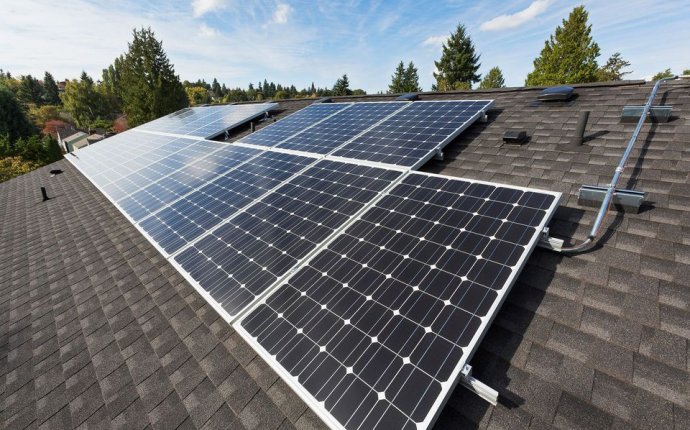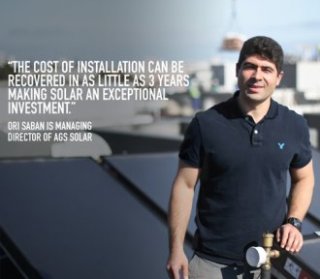
How to use solar energy at Home?
With electricity prices constantly on the rise and here to stay for now, many homeowners are now looking beyond the quick fixes of generators for long-term ways to beat our energy crisis. From heat pumps to diesel generators, from photo-voltaic systems to solar heating, there is a dizzying array of options available to the savvy homeowner.
The perfect light, heat and energy source is right above you – solar power. “Solar energy is the most renewable energy source we have – and it’s free”, says Ori Saban, managing director of AGS Solar, a company with over 50 years’ experience in solar technology and installation. We spoke to Ori about the various kinds of solar products available for the home and what homeowners need to know about costs, installation and benefits.

Why should I consider solar energy?
“Depending on the size of your house and what kind of solar energy system you install, you could save up to 60% on electricity from day one”, explains Ori. “Whether you build a new energy efficient house or upgrade an existing house, solar technology definitely adds to the value of your property. What’s more, solar systems require very little maintenance. Much less, for example, than an electric geyser.”
Ori believes that solar installations are on the rise as people have become frustrated with the country’s unstable electricity supply. “You will be saving money on your electricity bill but you will also enjoy the peace of mind of generating some of your own energy, and being much less reliant on the national power grid. With the technology available to us today, anyone can be an energy producer.”
How does solar energy work?
South Africa has one of the world's highest levels of solar radiation. Ori says: “Solar radiation can be used to generate either heat or electricity, both of which can then be used to significantly reduce the amount of electricity you buy.” When investing in solar technology, it is important to prioritise reducing your heaviest loads first as this will deliver the greatest savings. “A geyser typically accounts for up to 50% of a household’s electricity bill”, explains Ori. “Solar geysers are extremely efficient and relatively inexpensive so they are usually – along with installing LED lighting – the best place to start. Installing a solar photo-voltaic system is also a great option.”
Is all solar energy the same?
“No”, says Ori, “There are two different types of solar systems: solar thermal systems and solar photo-voltaic (solar PV) systems. Solar thermal systems heat water and save money because you use less electricity through not having to use a geyser. Solar photo-voltaic is a system that generates electricity that you can use in your home instead of having to buy it.”
Heating water with a solar geyser
Ori explains how a solar geyser works: “A special solar panel heats fluid using solar radiation, which is then transferred to a solar tank. The solar tank is a special geyser designed specifically for this purpose and is much more robust that a normal electric geyser. The solar geyser has a back-up electric element so that on days with no sun, you will still have hot water. In South Africa solar geysers are up to 89% efficient, saving a typical family of four R680 per month in Cape Town.”
Price: From R25 000 for a solar geyser (including installation), suitable for a for a family of four
Generating your own solar electricity
Now for making your own electricity: “Electricity is generated by silicone cells in solar panels. The electricity created is direct current (DC), while we use alternating current (AC) in our homes. An inverter is used to convert the electricity into AC. There are different types of systems available, depending on how much you are willing to spend and what your priorities are. All systems must be NRS 097 compliant to be legal”.
Here are the types of systems to choose from:
Grid-tied systems
Grid-tied systems are the cheapest and most cost effective solar PV systems. They generate some of your electricity. You use what you can, buy whatever else you need, and can sell any excess.
Priced From about R50 000, including installation, for a 1.5kW system
Grid-tied system with a battery back-up
You can add a battery back-up to a grid-tied system, which will provide power during load shedding, and can be used to increase your savings by using electricity you generated even when the sun is no longer available.
Priced: From about R85 000 including installation for a 1.5kW system
Off-grid system
In off grid-systems you replace the national power grid with your own grid using a battery inverter and batteries. Solar power is then fed into the system, some of which is used immediately, with the rest being stored to be used later. Off-grid systems have a large battery storage capacity, typically a two-day supply, for when bad weather reduces solar generation. A back-up power supply is also connected, usually a generator, but this can also be the national power grid. This is used to charge the batteries when there isn’t enough sun.
Priced: From about R250 000 for a home using 10kW/h per day
What do I need to know about installation and maintenance?
“Installaton is quite a complicated process and must be done by a professional and reputable installer. Make sure that you check references and insist on a warranty”, says Ori. “A professional installer will advise you on the best placement of your solar panels. The more hours your panels are exposed to full sun, the better they will generate power. Things like trees, tall buildings and chimneys can affect your exposure.”
“Of course, solar technology is a big investment, which is why most installation companies offer various financing options to help you spread the costs over a few years. We often use the analogy of a car; imagine if one of the big petrol companies offered you a deal whereby for the next three years you would have to pay a fixed amount to refuel your car, but after the third year, you could enjoy petrol for free for the rest of the car’s life. By switching to solar you can reduce your monthly electricity bill by up to 60% from day one and use these savings to pay off your system”.









